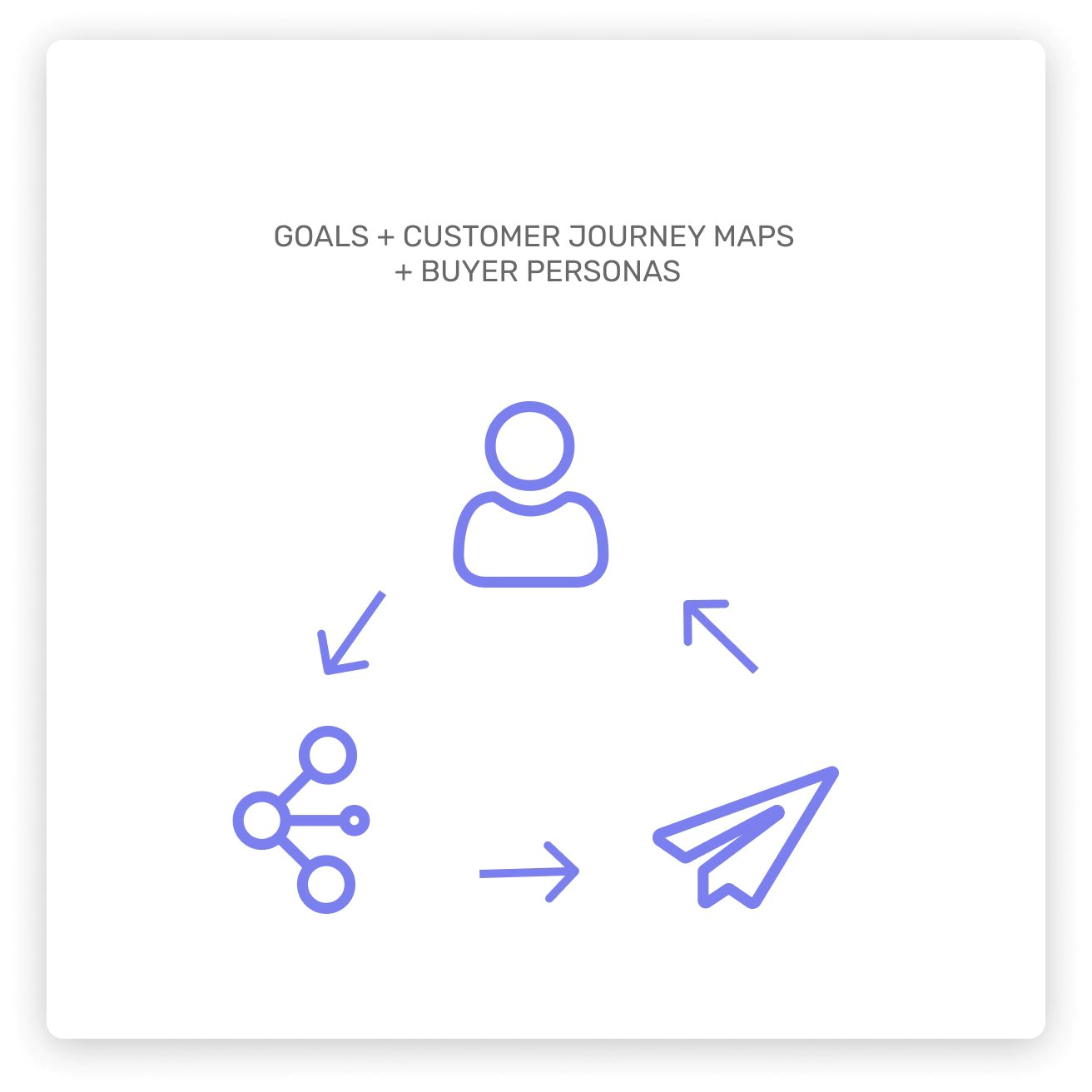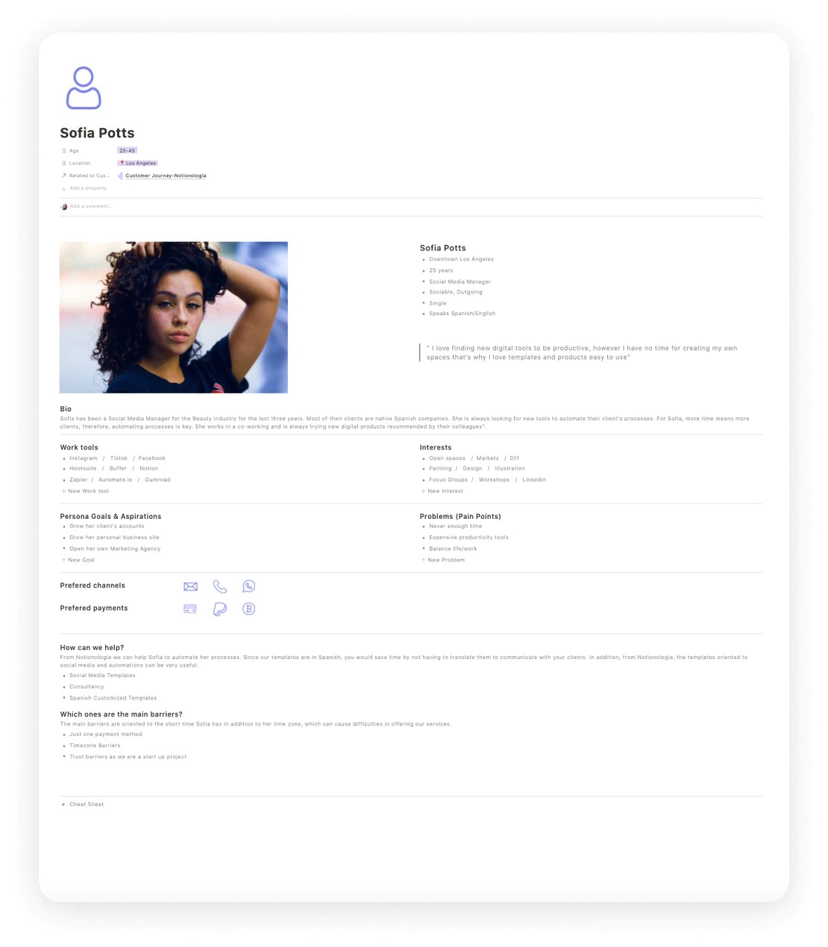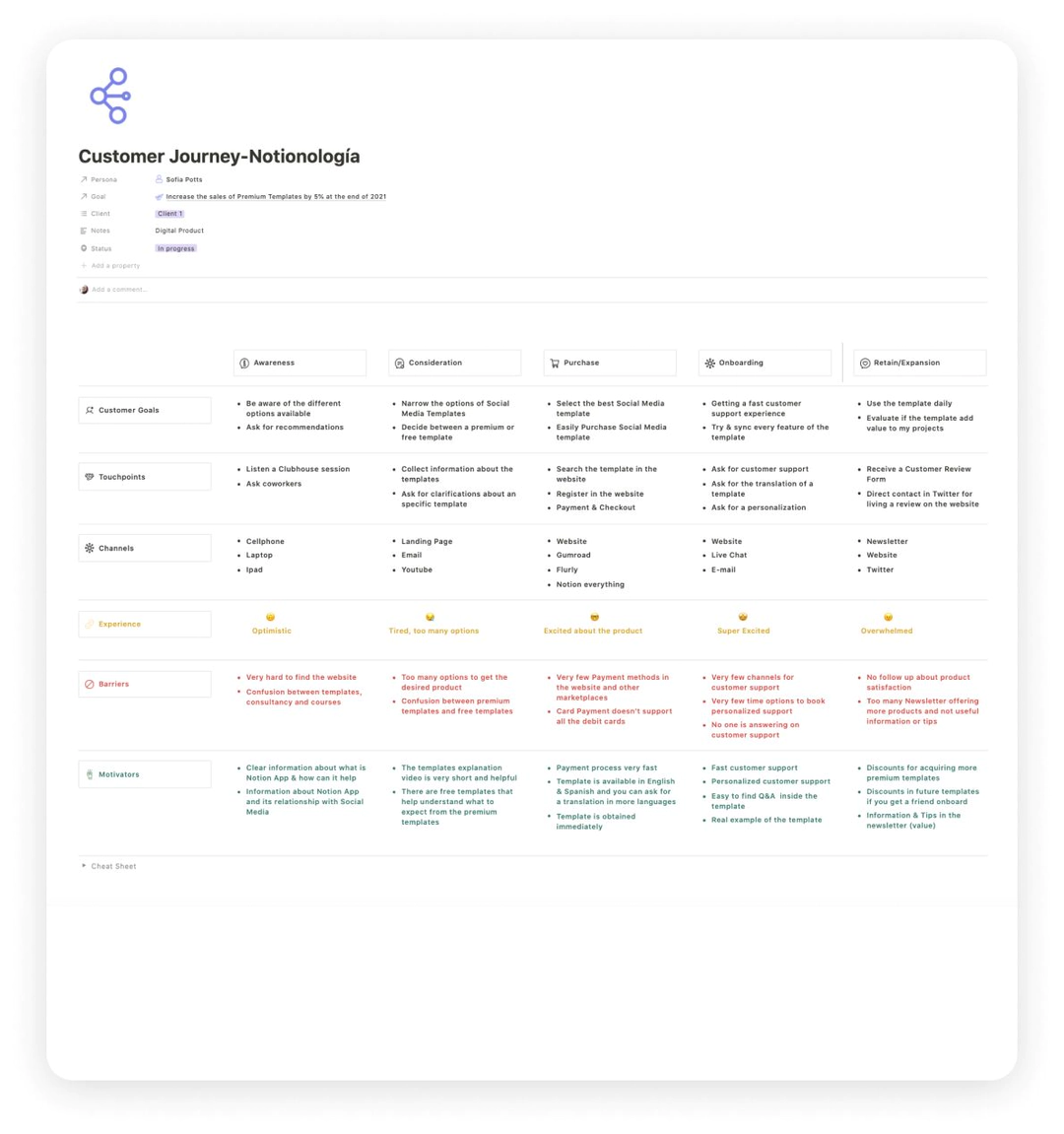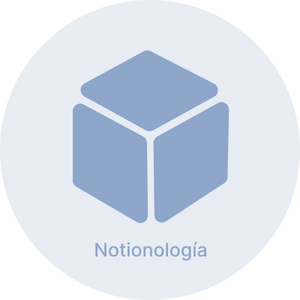by Alejandra Cienfuegos
The Customer Journey Map (CJM) is a tool that has been used for a long time in the business world. Despite being a well-known model, it has not been until recent years that its use has multiplied. Currently, it is easy to find information regarding CJM's creation in business and strategy blogs. However, few sources explain how CJM can be related to other strategic elements.
In my opinion, while building a Customer Journey Map, two strategic components cannot be missing. First, each map must be related to a strategic objective. For instance, to grow brand awareness or increase sales. Second, the map must be linked to a specific Buyer Persona. This will help us keep the customer at the center of our analysis. In this context, I will explain some definitions regarding the Customer Journey Maps and how you can work on the previous strategic relationships.
Goals
The first step before starting CJM creation, and in general any strategic journey map, is to think about the objectives. Within a company or project, two types of aims are distinguished: the general goals, which are usually broader and often function as the mission and vision of the company, and the specific goals, which are related to particular sections within the company or project. For the CJM construction, you need to think about both types of aims; nevertheless, it is easier to use specific goals within the area to which you will relate your map. Examples:
General objective: Be a reference as Notion Template creators in the Spanish community.
Specific objective: Increase the sale of premium templates by 5% at the end of July.
As you can see, the specific objective is related to Sales and also a particular type of product, which are premium templates. This step will help us to narrow our CJM analysis.

Buyer Persona
The second step before starting to "map" is to define the Buyer Persona. The benefits of creating these profiles are immense, and to tell you about it, I would have to write another entire article. But I will try my best to summarize the idea.
The creation of Buyer Personas helps to build the ideal customer of a company. In the case of projects, it helps in the construction of the perfect target beneficiary. This process is an excellent way of identifying the strategic characteristics that can add value to your future customers. Once you have discovered these characteristics, you can use them to improve your products and processes.
To build the Buyer Personas' profiles, you need to ask yourself questions like:
What do my prospective clients do in their spare time?
What are the main challenges that they face?
What channels do they use to buy?
What benefits are they looking for in a specific product?
In the case of Customer Journey Maps, I recommend building one map for each persona. However, remember to keep a balance as you don't want to end the month with 40 maps, as this isn't effective.
Customer Journey Maps
Once we have identified our main goals and created our Buyer Personas, we can start building our maps. The Customer Journey Map consists of a matrix that includes a journey (horizontal axis) and specific elements (vertical axis). On the one hand, the Journey ranges from when the customers realize they have a particular need until the post-purchase phase. On the other hand, the specific elements include aspects like:
What objective the customer is looking for in each stage?
What channels do customers use in each phase?
What barriers do they encounter in each phase?
While building Customer Journey Maps, you should complete each section according to the goal that you choose and your Buyer Persona's characteristics.
At this point, the work is yet not finished. Now comes the important stuff, which is to conclude according to each map. To do this, you should identify your areas for improvement, understand what you are doing wrong, develop a strategy to solve the gaps, and retain our customers.

What happens if I don't create Objectives or Buyer Personas?
Maybe now, you don't see the benefit of going through the objectives and the Buyer Personas to create your map. However, it is a very significant step. Without objectives, you will not have a clear direction for your company or project: Do you want more sales? Do you want to retain the customers you already have? Do you want to start looking for new clients? Expand the business? Each of these objectives will involve different actions.
Without Buyer Personas, you will not know to whom you will dedicate all the actions implemented: Through which channels do your customers buy? Do they always buy online? Do they like to go to physical stores? Do they want quick solutions? Do they want cheap solutions? Each type of Person will also need different actions.
Without these two elements clear, you will find yourself making a map with no real direction or recipient.
What if I have many client profiles and many goals?
In this case, the ideal action will be to make groups. You will find the key in the balance. Indeed, each map needs a Buyer Persona and a specific objective, but build 50 maps is not practical. Otherwise, you will have a high volume of maps that won't apply strategically. If you have many customer profiles, narrow them into groups as homogeneous as possible to reduce the number.
How do I know if what I included on the map is real?
No, this is not a silly question. To build a Customer Journey Map we cannot rely on our beliefs or assumptions. Suppose we are analyzing the Consideration stage on a map. We can believe that, in this stage, our ideal customer looks for information on his phone before going to the store, but we will never be sure. We need data to confirm each assumption for each element that we place on the map. To use this statement, you must look for surveys, market studies, or statistics that support each of your assumptions. Another ideal way to collect this information is by using your website analytics, creating surveys for your current clients, creating focus groups, etc.
Companies such as Uxpressia or Smaply, are ideal tools to build this type of map; however, their free plans generally restrict you to make one single map. Otherwise, you will need a monthly payment plan. Our proposal in Notionología is a Notion Template of one single payment that allows you to make unlimited Customer Journey Maps. Additionally, you will be able to relate each map to objectives and Buyer Personas in a visually attractive way. Finally, you will have a space for the most essential part after creating a map: start building a strategy.
